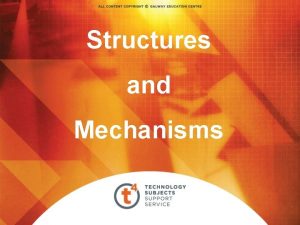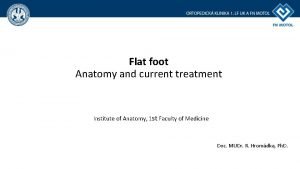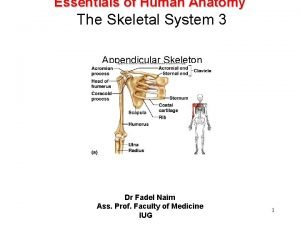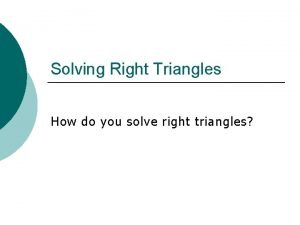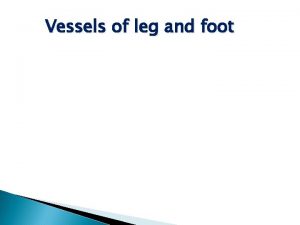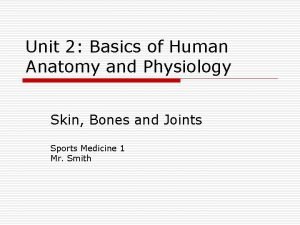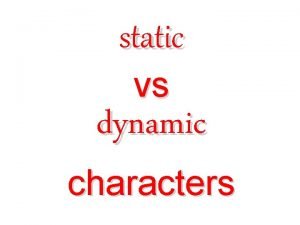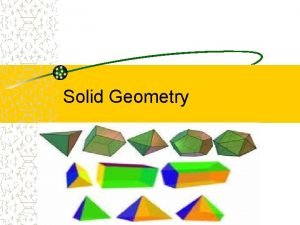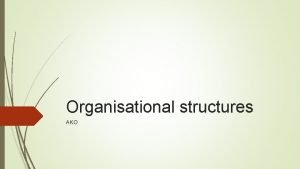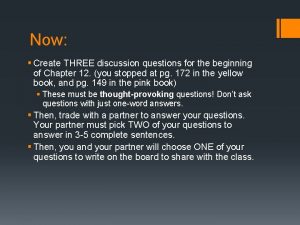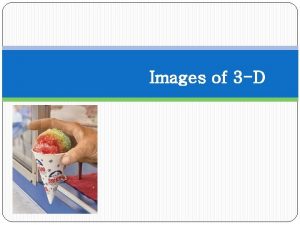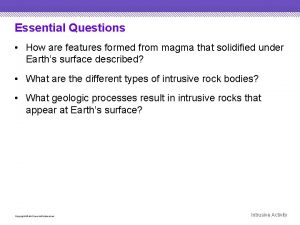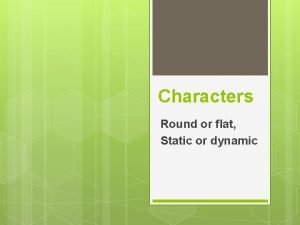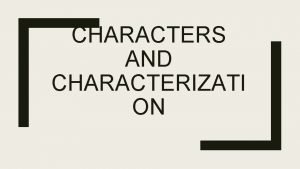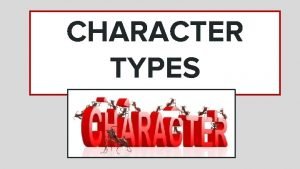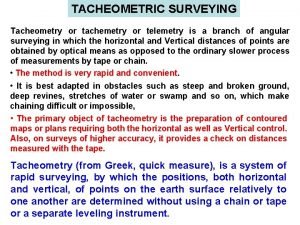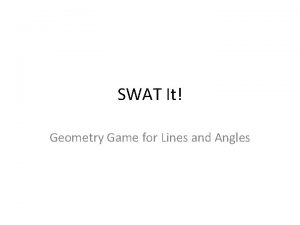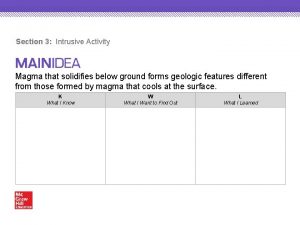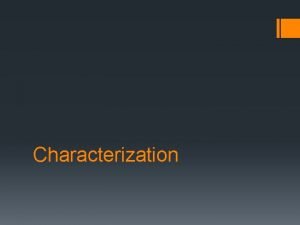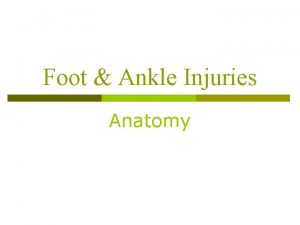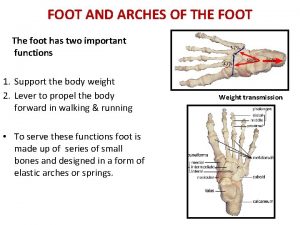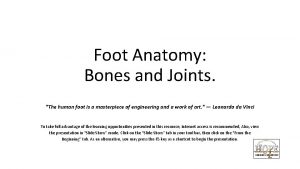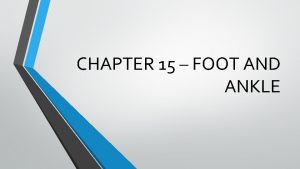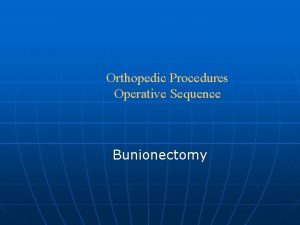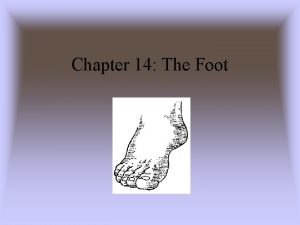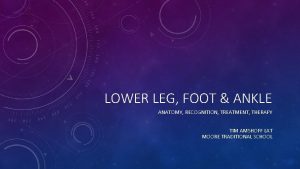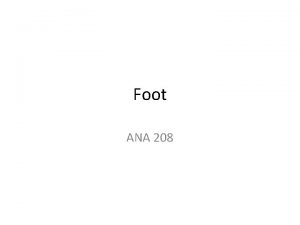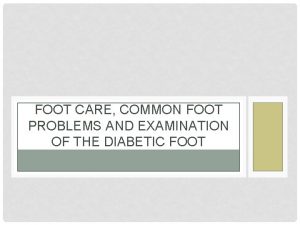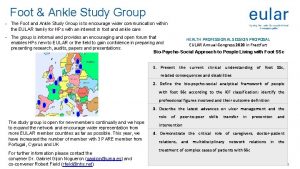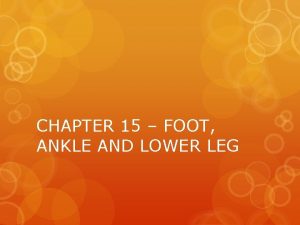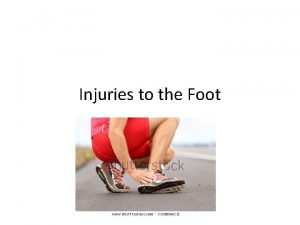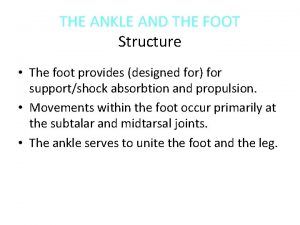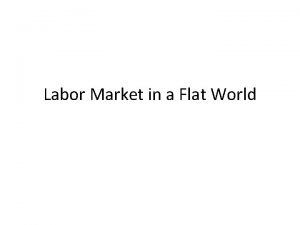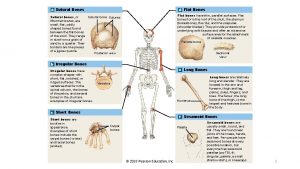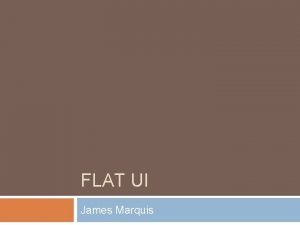Flat foot Anatomy and current treatment Institute of










































- Slides: 42

Flat foot Anatomy and current treatment Institute of Anatomy, 1 st Faculty of Medicine Doc. MUDr. R. Hromádka, Ph. D.

Flat foot • Pes planus • Low medial longitudinal arch of foot • It is not flat forefoot

Flat foot • Deformity of whole foot, not only the medial part • Longitudinal arches of foot– medial and lateral • Etiology - congenital predisposition, overweight, connective tissue diseases (e. g. rheumatoid arthritis) , nervous system diseases, etc. Medial view Lateral view

Flat foot • Impairment of soft tissues • „Too many toes“ sign • Valgus position of the heel– Pes planovalgus, (normal up to 10 deg) • Medial side of the foot is overloaded Posterior view Medial-anterior view

Flat foot • Hallux valgus – lateral deviation of the big toe at level first metatarsophalangeal joint (MTP) • Valgus position up to 20 degrees is physiological • Pronation of the toe is always pathological • Irritation of the second toe • On medial side of the MTP joint the bunion is irritated

Flat foot Bones of foot form longitudinal and transversal arch Keystone of masonry arch • The inner arch is formed: calcaneus, talus, naviculare bone, cuneiform medial bone and the first metatarsal bone

Flat foot Bones of foot form longitudinal and transversal arch • Transversal arch is at level of cuneiform bones and cuboid bone • Transversal arch is not at level of metatarsal heads

Plochonoží Bones of foot form longitudinal and transversal arch • Transversal arch is at level of cuneiform bones and cuboid bone • Transversal arch is not at level of metatarsal heads, certainly not during weight bearing

Flat foot • Transversal arch is at level of cuneiform bones and cuboid bone • Transversal arch is not at level of metatarsal heads, certainly not during weight bearing • Positron of the normal foot and flatfoot in a load Physiological foot with position of the heel bone Varus position of the forefoot in case of flat foot

Movement of ankle • Movement of the ankle joint, articulatio talocruralis • Dorsal flexion • Plantar flexion

Movement of ankle and foot • Complex joint system lower the ankle • Subtalar joint (talocalcanearis) • Transverse tarsal joint (Chopart’s) • Talonavicular joint • Calcaneocuboid joint

Movements • Eversion • Dorsal flexion • Pronation • Abduction of forefoot • Inversion • Plantar flexion • Supination • Adduction of forefoot

Flat foot • Pes planus is deformity based od improper position of joints below the ankle joint • Static load (dysfunction of static stabilizers) • Dynamic load (dysfunction of dynamic stabilizers) • The foot is like in eversion • The deformity overloads stabilizers of joints lower the ankle joint • Ligaments of the foot • Muscles (tendons) of the foot

Static stabilizers • Ligaments of the foot are important to hold the foot in proper position in static load (e. g. standing) • form „soft skeleton“ of foot • Important ligaments: • Aponeurosis plantaris • Plantar ligaments of rearfoot Physiological foot Flat foot

Static stabilizers Plantar tarsal ligaments (ligg. tarsi plantaria) • Long plantar ligament • On plantar side of the heel bone, cuboid bone, insertion to metatarsals • Calcaneonavicular plantare ligament (Spring ligament) • Main stabilizer of the inner arch • Form the plantar part of the talonavicular joint • In case of its tear the arch drops down Physiological foot Flat foot

Static stabilizers Plantar aponeurosis • Medial part • Origin on medial processus of calcaneus • Consists of central, medial and lateral part • Lateral part • Variable part, insertion to 5 th metatarsal base

Static stabilizers Plantar aponeurosis • The central part is inserted thought sagittal septum on fibrocartilago plantaris (plantar plate) • Plantar plate is below each head of metatarsal bone, on plantar side of metatarsophalangeal joint (MTPJ) • Inside of plantar plate of the first MTPJ are sessamoids bones

Static stabilizers Fibrocartilago plantaris – plantar plate, fibrous cartilage, protects and stabilize the joint during a load

Static stabilizers Plantar aponeurosis • Inserted on each plantar plate • Aponeurosis holds longitudinal arches • During dorsal flexion of MTPJ arches are more tied

Static stabilizers Plantar aponeurosis • Transversal connections of the aponeurosis hold the forefoot in transversal plane during load • Plantar plates are like links of a chain below metatarsal heads • The chain, deep transverse metatarsal ligament, ties the forefoot

Dynamic stabilizers • Muscles hold proper position of joints during a weight bearing activities (e. g. walking) • Extrinsic muscles • Tibialis posterior muscle • Flexor digitorum longus • Flexor hallucis longus • Triceps surae • Tibialis anterior muscle • Peroneus (Fibularis) longus • Intrinsic muscles • Abductor hallucis longus

Dynamic stabilizers Tibialis posterior • Insertion on tuberositas ossis navicularis – elevates the medial margin of the foot • Insertion os sustentaculum tali (talar shelf) holds the talus head n proper position • Insertions to 3 rd-5 th metatarsal bases do supination of the foot

Dynamic stabilizers Tibialis posterior • Insertion on tuberositas ossis navicularis – elevates the medial margin of the foot • Insertion os sustentaculum tali (talar shelf) holds the talus head n proper position • Insertions to 3 rd-5 th metatarsal bases do supination of the foot

Dynamic stabilizers Triceps surae • Insertion on calcaneal tuberosity • Some fibers of Achillis tendon are connected to plantar aponeurosis • The muscle turns the heel on flat foot to valgus position

Treatment • • • Focused to soft tissues (calcaneonaviculare plantare liagament, tibialis posterior tendon) Valgus position of the heel bone The medial longitudinal arch Varus position of the forefoot Abduction of the forefoot Hypermobility of first metatarsal bone • • The flat foot can be rigid or flexible The deformity can affects the ankle (talocrural) joint • Operations on flat foot • Procedures on tibialis posterior tendon • PCDO (Posterior displacement calcanear osteotomy) • MCO (Medalizing Calcaneal Osteotomy) • Lateral lengthening procedure • Evans lengtheting procedure

X-rays, side view and AP weight bearing Meary’s angle Talonavicular coverage angle

Classification • • Stage I – impairment of tibialis posterior tendon (TP) Stage II - impairment of TP + deformity of the forefoot, the deformity is flexible Stage III - impairment of TP + deformity of the forefoot, the deformity is rigid Stage IV – impairment of ankle joint Stage I II IV Physical findings Treatment IA Pain TP Conservative treatment ev. synovectomy IB Pain TP, synovialitis IC Valgus heel bone IIA Varus forefoot MCO, Synovectomy ev. FDL IIB Varus forefoot +Abductio of forefoot MCO, Evans, Synovectomy ev. FDL IIC Varus forefoot +Abd +Hypermobility of first MTT MCO, Evans, Cotton IIIA Rigid rearfoot IIIB Rigid rearfoot +Abd forefoot Artrodesis (talonavicularis, Subtalaris, double, triple) IVA Flexible valgus TC Artrodesis, reconstruction of MCL IVB Rigid valgus TC TTC Arthrodesis TP – tibialis posterior; ABD – abductio; MTT – metatarsus; TC- art. talocruralis; MCO – medalizing calcanear osteotomy; FDL – flexor digitorum longus

Medalizing Calcaneal Osteotomy (MCO) • • • shift of Achilles tendon insertion medially shift of beginning of plantar aponeurosis medially position change in art. subtalaris, partial correction of its subluxations • Technology operations (open, minimally invasive surgery MIS) osteotomy (chevron type, one plane) Different techniques fixation (screws, plates, staples) • • • One possibility of the osteotomy is a minimallyinvasive MCO

Minimally invasive MCO

Minimally invasive MCO

Minimally invasive MCO

Minimally invasive MCO

Minimally invasive MCO

Synovectomy tibialis posterior tendon • Operation in case of problems at the site of tibialis posterior tendon • If the tendon is interrupted performs its synovectomy i. e. removal inflammatory synovium from its surface • If a tendon is torn, its end is inserted to tuberosity of navicular bone • If the tendon is destroyed, the tendon of flexor digitorum longus is used

Tendosynovectomy tibialis posterior

Evans osteotomy • Lateral lengthening procedure • The principle is prolongation of lateral column of the foot, due osteotomy of the calcaneus • Extending leads to adduction of forefoot and its pronation • Various modifications (Hintermann) • Different types of osteotomy fixation (screw plate, KI wires, without fixation) • Using grafts / u, without using

Evansova osteotomie Operační postup • Podélný přístup s ploskou nohy nad horním okrajem šlachy m. fibularis brevis • Osteotomie oscilační pilou a pak dlátem • Zavedení KI drátů a distrakce osteotomie • Vložení trikortikálního kostního štěpu z os ilium • Případná fixace osteotomie dlahou

Evans osteotomy

Evans osteotomy

Postoperative care • • • Standard ATB prophylaxis Postoperative high plaster of Paris splint or inflated boot Change dressing 1 or 2 postoperative day Walking on crutches for 6 -8 weeks Physiotherapy starts 3 or 6 postoperative week

Conclusion • • • Flat foot is a complex deformity of foot legs and affects bone structures, ligaments and muscles The deformity is ussualy based on disposition and improper load (e. g. overweight) Untreated flat foot leads to irreversible changes in the foot joints Operations can solve all components of deformity up to second stage Some treatments can also be performed minimally invasive

Thanks for your attention
 Cam and follower example
Cam and follower example Forefoot abduction
Forefoot abduction A ladder with its foot on a horizontal flat surface
A ladder with its foot on a horizontal flat surface Congenital flat foot
Congenital flat foot You put your right foot in you put your right foot out
You put your right foot in you put your right foot out Find m∠g, rounded to the nearest degree.
Find m∠g, rounded to the nearest degree. Epoch foot treatment
Epoch foot treatment Anatomy and physiology of the foot
Anatomy and physiology of the foot Line current and phase current
Line current and phase current Difference between phase voltage and line voltage
Difference between phase voltage and line voltage N=nc exp(-eg/2kt)
N=nc exp(-eg/2kt) Ac systems lesson 4
Ac systems lesson 4 Drift current
Drift current Ceramic composition resistors
Ceramic composition resistors In a ∆-connected source feeding a y-connected load
In a ∆-connected source feeding a y-connected load Infineon
Infineon Diffusion current density
Diffusion current density Posterior tibial recurrent artery
Posterior tibial recurrent artery Foot bone anatomy
Foot bone anatomy Reeling gait
Reeling gait Q point
Q point Welding chapter 3 answers
Welding chapter 3 answers Hazard based safety engineering
Hazard based safety engineering Non planar circuit
Non planar circuit Trends of media and information
Trends of media and information Round vs flat character
Round vs flat character Static characte
Static characte A solid object with two identical ends and flat sides
A solid object with two identical ends and flat sides Difference between tall and flat organization
Difference between tall and flat organization Is ponyboy static or dynamic
Is ponyboy static or dynamic Triangular prism faces, edges vertices
Triangular prism faces, edges vertices What are sills
What are sills Flashy and flat hydrograph
Flashy and flat hydrograph A shape with 6 faces and 12 edges
A shape with 6 faces and 12 edges Round and static character
Round and static character Static character definition literature
Static character definition literature Round flat characters
Round flat characters Main character vs minor character
Main character vs minor character Principles of tacheometry
Principles of tacheometry A straight path that has no thickness and extends forever
A straight path that has no thickness and extends forever Magma
Magma Round and flat characters
Round and flat characters Flat file vs relational database pros and cons
Flat file vs relational database pros and cons
